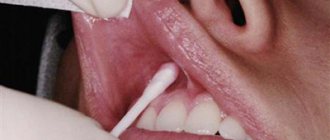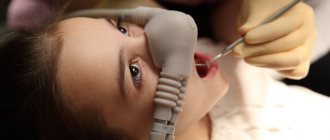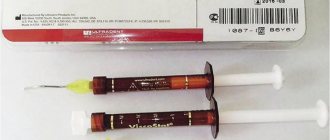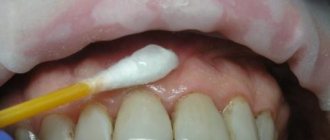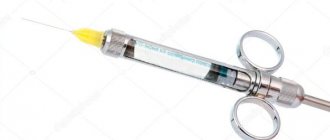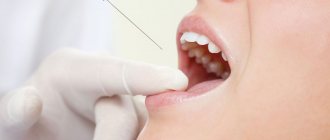Infiltration anesthesia is one of the types of local anesthesia, in which the anesthetic is administered using a syringe into the soft gingival tissue. In dentistry, it is one of the most common, as it can ensure painless dental procedures for sixty minutes or more. Among dental patients, it is called “freezing” because after its administration, depending on the area of anesthesia, numbness is felt in the tongue, upper/lower lip, cheek, oral cavity or part of the face.
Specialists of the dental department of CELT use different types of infiltration anesthesia in the treatment of pulpitis, deep caries, and tooth extraction. The process uses various new generation drugs that have proven themselves well. Their diversity allows you to choose the one for which the patient has no contraindications. The active substances of their composition are quickly eliminated from the body. You can find out the price of infiltration anesthesia in the price list, in the “Services and Prices” section. To avoid misunderstandings, check the numbers with our information line operators or during a consultation with a doctor.
Consultation with a dentist-therapist - 1,000 rubles.
Infiltration anesthesia, conduction anesthesia - 500 rubles.
At CELT you can get advice from a dental specialist.
- The cost of a consultation with a dentist-therapist is 1,000
Make an appointment
Infiltration anesthesia in dentistry
The operating principle of infiltration anesthesia is to stop the nerve impulse that is transmitted from the pulp to the brain. It is manifested by numbness of the treated area: sensitivity is restored as the components of the drug are broken down in cellular tissues. The effect is achieved almost instantly and covers only a certain area, and the drugs used are safe for the human body, since the concentration of active substances in them is minimal.
In order to eliminate the risk of an allergic reaction to the anesthetic in the patient, the dentist conducts preliminary testing. Having individually selected the drug, he determines its dose and injects it into the tissues by injection, following a certain technique. Distributed throughout the cells, the anesthetic stops nervous activity and eliminates pain during dental procedures. It can be entered:
- Under the skin;
- Under the oral mucosa;
- Into the tissue surrounding the bone (periosteum).
Depending on the method of administration, infiltration anesthesia is:
- Direct – targeted introduction into the area that will be subjected to dental procedures;
- Indirect - injection of the entire area adjacent to the pathological focus with penetration of the active components deep into the tissue.
Possible complications and precautions
Despite the fact that infiltration anesthesia is widely used not only in dentistry, this method of pain relief sometimes causes complications:
- Hematoma, which may appear due to damage to a vessel by a needle.
- Rupture of dental ligaments or tooth deviation. This complication is a consequence of too rapid administration of the drug. To avoid such a pathology, it is necessary to observe the rate of administration of the anesthetic, which is 1 ml/15 seconds.
- Trauma to the nerve trunk, which provokes the development of traumatic neuritis.
- Periosteum injury. This complication is accompanied by pain and swelling.
- Development of infectious inflammation. The reason for this is usually the use of unsterile instruments.
- Injury to the muscle tissue located in the infratemporal fossa.
- Paralysis of facial nerve fibers. This condition goes away on its own within a few hours. With this complication, the lip may sag and eye reflexes may be absent.
- Poisoning of the body. The cause of intoxication is too large a volume of injected anesthetic solution or its injection into a blood vessel.
- Allergy. Manifests itself in the form of redness of the mucous membrane, swelling, and difficulty breathing.
In order to avoid complications of infiltration anesthesia, it is necessary to follow a number of rules:
- Conduct preliminary testing of the anesthetic to determine an allergic reaction.
- The dose of the administered anesthetic drug must correspond to the norm specified in the instructions. If the anesthetic does not have an effect, you need to replace it with another similar medication.
- Study contraindications to infiltration anesthesia and the drug used.
- When administering the anesthetic, do not make sudden movements so as not to injure the soft tissues.
- If you are afraid of the needle, you can use preliminary application anesthesia. Before making the injection, the doctor will treat the area of the mucous membrane with an anesthetic gel.
- In order to prevent the needle from entering a large vessel, the doctor pulls the syringe plunger towards himself. If blood appears in the syringe, this indicates an error. In such a situation, the specialist moves the needle to another place.
In order not to encounter the unpleasant consequences of infiltration anesthesia, you need to seriously approach the issue of choosing a clinic and specialist. After all, it is due to medical errors that most complications arise. In our clinic they are extremely rare. We are proud of the level of training of our specialists and invite you to undergo safe treatment in a comfortable environment.
Infiltration anesthesia: application
Indications
- Treatment of pathological conditions of teeth and gums (caries, pulpitis, etc.);
- Removal of teeth of varying complexity;
- Implantation operations;
- Prosthetics;
- Opening the abscess and draining it;
- Removal of tumors on the oral mucosa;
- Surgical dental intervention in the oral cavity.
Contraindications
- Identification of the patient’s individual intolerance to the components of painkillers;
- A pronounced inflammatory process in the oral cavity (anesthesia may not give the desired result);
- The patient has a mental illness;
- Neoplasm of malignant nature.
Preparations and solutions
The following solutions are used for infiltration anesthesia:
- novocaine;
- lidocaine;
- bupivacaine;
- trimecaine;
- mepivacaine;
- naropina;
- ultracaine;
- articaine, etc.
When choosing a drug for local anesthesia using the tissue infiltration method, it is worth considering that only sterile solutions are suitable. Suitable anesthetics are those that dissolve well in water and are not destroyed during sterilization. The permissible concentration of active substances is 0.25-0.5%.
The needle parameters are determined depending on the objectives of anesthesia:
- length – 16-32 mm;
- diameter – 0.3-0.5 mm.
Quite rarely, needles with the following parameters are used for this type of anesthesia: length - 23 mm with an outer diameter of 0.8 mm; length – 32 mm with a diameter of 0.9 mm. When selecting an instrument, it is worth considering that small sizes reduce the risk of injection getting into the vessel.
Among modern instruments, syringes with the ability to fix the needle at an angle deserve attention. Thanks to this design, it is much easier to reach the desired point in a hard-to-reach place in the oral cavity.
Types of infiltration anesthesia
Classification into species depends on the area of influence.
| Species name | Injection area | When is it shown? |
| Intraosseous | Bone in the area between tooth roots | Removal of one, two, three teeth. |
| Intraseptal | Interdental bony septum |
|
| Intrachannel | Pulp | As an adjunct to intraligmentary anesthesia. |
| Intraligmentary | Between tooth root and bone |
|
| Subperiosteal | The area between the gum and the base of the tooth root |
|
Anesthesia according to Vishnevsky, which combines infiltration and conduction techniques, deserves special mention. It is called “creeping infiltrate” because it stops not only receptors, but also the transmission of nerve impulses along the endings of nerves located in the treated area. An excellent effect is achieved through layer-by-layer administration of the drug: after each stage, the dentist cuts the next layer of tissue with a scalpel. It has the ability to quickly stop bleeding if it occurs and minimizes the risk of damage to blood vessels and nerves.
How does the procedure work?
The dentist moves the patient's lip slightly to the side (with a mirror or free hand) and makes an injection (usually under the periosteum).
Dental practice shows that the effectiveness of the anesthetic solution on the lower and upper jaws is different. This is due to their anatomical features. The effectiveness of the drug also depends on how close the needle is to the neurovascular bundle.
Important! For any manipulation of the teeth of the upper jaw, infiltration anesthesia most often has to be combined with conduction anesthesia.
Upper jaw
Fangs
The needle is carefully inserted into the upper fold, which is located between the lateral incisor and the canine, then the syringe is slowly advanced to the apex of the tooth root. The depot of anesthetic material should be located above the root. To “turn off” the incisive nerve, a prepared anesthetic solution is additionally injected from the palatal side into the area of the incisive papilla.
Central incisors
The syringe enters the transitional fold and moves further, all the way to the bone. When the needle reaches the top of the tooth, an anesthetic solution is injected.
Lateral incisors
The syringe is carefully inserted into the transitional upper fold. The drug solution is placed just above the root apex. Another dose of solution is needed on the palatal side at the level of the incisor, sometimes in the incisive foramen.
First premolar
The needle is placed in the upper transitional fold of the upper first premolar. A depot of anesthetic material is created above the root apex. To completely anesthetize the mucous membrane from the palate, the solution should be injected at the level of the same tooth into the angle formed by the palatine and alveolar processes of the upper jaw.
First molar
The procedure is similar to the previous one, only the solution is injected at the level of the apex of the second premolar root. From there, the drug reaches the nerve branches much faster.
Second premolar and mesial buccal root of the first molar
The needle of a syringe with an anesthetic is injected into the upper transitional fold between the premolars. In this way, an anesthetic depot will be created over the root apex of the second premolar.
Second and third molars
The needle is located in the upper transitional fold between the second and third molars and advances to the bone. The solution is injected over the tops of the tooth roots.
Lower jaw
Here, an analgesic effect can be achieved by inserting a needle directly into the area of the front teeth, creating a depot of the anesthetic drug on or under the periosteum. When carrying out therapeutic manipulations for incisors and canines, respectively, it is necessary to insert a needle into the lower transitional fold, which is located in the area of the diseased tooth, and then move it down to the apex of the root.
To numb the row of anterior teeth of the lower jaw, the syringe needle is placed in the transitional fold along the midline between the central incisors.
Soft tissues of the face
After antiseptic treatment of the skin, the patient's face is covered with sterile towels. The anesthetic is administered layer by layer, starting with the skin. The anesthetic solution is injected using a special syringe. Repeated injection of the needle is carried out through the skin areas infiltrated by the drug - into the subcutaneous fatty tissue, gradually extending beyond the surgical field.
Method of subperiosteal anesthesia by infiltration
A short, thin needle is injected into the place where the fixed mucous membrane of the gums becomes mobile. With such deposition of the anesthetic substance, the effectiveness of infiltration anesthesia increases significantly.
Pros and cons of infiltration anesthesia
| Pros: | Minuses: |
|
|
Advantages and disadvantages
For simple surgical interventions, local anesthesia is indispensable; it has advantages over other types of sensitivity suppression. The drug that is used, an anesthetic solution, acts strictly at the injection site, which helps to avoid severe complications and adverse reactions.
The blockade of pain sensitivity develops on average in 10-15 minutes. The effect lasts for an hour or more, so local anesthesia can reduce pain in the area of the postoperative wound. The patient’s consciousness does not suffer from the action of the local anesthetic, so after the manipulation he can leave the clinic and not be in the ward.
But local anesthesia has its drawbacks. Just a few years ago, it was widely used for operations on superficial tissues and extremities; methods for intravenous administration of drugs with simultaneous application of a tourniquet were developed. Intraosseous anesthesia was widely used. But due to the large number of adverse reactions and complications, these methods began to be used less frequently. And after receiving high-quality drugs for anesthesia, dangerous methods of pain relief were practically abandoned.
The disadvantage of the local method is its limited scope of application. It is effective for anesthesia of mucous membranes, skin and superficial tissues, but is not used for operations on the abdominal and pelvic organs, neck and head.
The infiltration type of local anesthesia cannot be used when operating on malignant tumors due to the possibility of tumor cells entering beyond the wound into other tissues. This increases the risk of developing metastases.
Reviews about our dental therapists
I would like to express my gratitude to the dentist Elena Nikolaevna Kiseleva and her assistant Svetlana - they are real specialists and at the same time sensitive, not burnt out by years of practice.
Thanks to them, I have been coming back here for many years. Thanks to the management for such doctors! Read full review Svetlana Nikolaevna
13.08.2021
I am very grateful to Evgeniy Borisovich Antiukhin for removing my three eights. Especially considering that the lower tooth was not the simplest (it was located in an embrace with a nerve). The removal took place in 2 stages, one tooth under local anesthesia, two under general anesthesia. I had no idea that wisdom teeth could be... Read full review
Sofia
28.12.2020
Techniques
The tissue infiltration method is widely used in surgery, with the exception of particularly complex cases that require a longer period of pain relief. There are several ways to perform the procedure:
- under the skin;
- under the mucous membrane;
- to the periosteum area.
According to the method of drug administration, infiltration anesthesia is of two types:
- direct – local anesthetic is injected into the operated area;
- indirect - the drug is administered throughout the adjacent area, with the active components penetrating into the deep layers of tissue (the method is based on diffusion).
An effective technique for anesthesia of the lower jaw
Many novice dentists often face the problem of anesthesia of the lower jaw. She has a complex anatomy, and the difficulty in administering anesthesia is that we do not see obvious anatomical areas where we need to inject. With the upper jaw everything is much simpler. We simply numb the area of the tooth that we will treat. Unfortunately, this cannot be done on the lower jaw in all patients. She has a denser bone structure and this makes the passage of the anesthetic more difficult.
There are patients with thin bones for whom only infiltration anesthesia is sufficient. But most have to undergo torus or intraligamentary anesthesia. The latter method is less common, since it requires a special needle and special care when performing the injection.
Technique of mandibular anesthesia
We will tell you how to perform conduction anesthesia on the lower jaw in order to achieve 100% results and work comfortably with the tooth without causing discomfort to the patient.
To determine the injection site, you will have to remember the anatomy of the lower jaw. It has coronoid and condylar processes. Between them there is a notch and a hole where the branch of the nerve enters. This is where you need to get the needle to “turn off” that part of the nerve that enters the body of the lower jaw and innervates the teeth.
First, feel the edge of the coronoid process with your finger. This is not always easy to do if the patient, for example, has large masticatory muscles. To feel it better, ask the patient to cover his mouth a little. The muscles will relax and you will be able to separate the body of the muscle from the coronoid process.
When you find the process, move your finger a little and feel the buccal ridge. It can be easily felt. This is the landmark where the injection point is located.
Holding your finger on the inside, pulling out the corner of your mouth as much as possible with a carpule syringe, inject. At the same time, the patient needs to keep his mouth wide open so that the muscles stretch, the needle passes through them easily and there is no false impression that you are hitting the bone.
Then slowly insert the needle until it makes contact with the bone. To understand whether you have hit a bone, you can lightly tap it, then a characteristic sound will appear.
After this, you need to release about a third of the anesthetic and change the position of the needle: moving it away and reintroducing it at different angles, and so on several times. This, as it were, “spills” the anesthetic over the entire surface between the coronoid and condylar processes.
Completion of the anesthesia procedure
There is no need to enter the carpula completely. Other nerve branches in the thickness of the bone tissue, which also innervate the teeth and do not fall within the zone of anesthesia, can provide the sensitivity that remains after conventional conduction anesthesia.
It is better to apply additional infiltration anesthesia in the tooth area, no more than 1/5 of the volume of the carpule.
With the correct technique of mandibular anesthesia, you can treat several teeth in a row, and your patients will be painless and comfortable.
Deep sedation with Propofol - drug-induced sleep
Dental anesthesia for children
Dental treatment for young children under anesthesia raises the maximum number of questions among adults. The main ones relate to the safety of the procedure and side effects. Parents are also interested in what kind of anesthesia they give their children during dental treatment - whether there are high risks of negative consequences.
Is anesthesia harmful for dental treatment for children?
Sevoran is a non-narcotic, non-toxic, completely safe drug that is used in dentistry for treatment under general anesthesia. It is given to the child through a mask, instantly putting him to sleep.
Among the advantages of the drug, confirming its safety for young patients:
- excreted from the body unchanged;
- does not affect internal organs;
- does not depress the heart;
- maintains physiological blood pressure readings.
Sevoran simply turns off consciousness and does not cause side effects. Additional positive points:
- pain relief - doctors do not administer additional drugs to the child;
- pleasant smell - children themselves breathe through the mask with pleasure;
- quick recovery from anesthesia - awakening takes only 10-15 minutes.
The high quality of the composition ensures that the use of anesthesia for dental treatment for children eliminates any unpleasant consequences.
Anesthesia at the dentist for children: features
Having figured out whether it is possible to treat a child’s teeth under general anesthesia, parents begin to prepare the child for the procedure.
To do this, the young patient is prescribed a series of examinations:
- Consultation with a dentist.
The doctor must assess the amount of work - determine caries, pulpitis, and the intensity of tooth destruction. Together with the parents, a decision will be made on how many teeth to treat, what to remove, and whether prosthetics are necessary. - Testing, primary diagnostics.
The basic set of studies is general and biochemical blood tests, electrocardiogram (ECG).
- Obtaining permission from a pediatrician.
If there are chronic diagnoses, the child is also sent for a consultation with a specialized specialist in order to eliminate any risks during dental treatment.
When all issues are agreed upon, the doctor sets a date for treatment and gives final recommendations.
Soldatenkova Alina
When removing baby teeth, it is very important to preserve space for future permanent ones. To do this, they either undergo prosthetics or go to an appointment with an orthodontist to install an orthodontic seat holder.
Technique
- Direct - used in the treatment of root canals, gums, etc.;
- indirect - most often practiced when removing teeth.
With the direct technique, the injection is made directly into the tissue in the surgical area. Loss of pain sensitivity is achieved only in this area.
With indirect anesthesia, the anesthetic is distributed in layers: when making an injection, the doctor injects the medicine as the needle moves (deeper or along the surface). This way it gets into different layers of tissue and increases the area of pain relief.
In both cases, the injection is performed with a syringe with a carpule needle with a diameter of only 0.3 mm (twice as thin as a normal one) and is almost painless.
Preparation
First, the doctor finds out whether the patient has any contraindications to the procedure (allergy to the anesthetic). Then preliminary anesthesia is performed - superficial anesthesia at the injection site (gel or spray) or an anesthetic injection into the gum mucosa. When the gums are numb, infiltration anesthesia is performed directly.
Oxygen-nitrogen sedation
ZAX is a mixture of oxygen and nitrous oxide, often known as laughing gas. Served through a mask. After inhaling the gas, the child falls into a relaxed, sleepy state, calmly perceives the surrounding reality, hears and understands speech addressed to him.
- maintains a positive mood - at the same time as treatment, the child watches cartoons and gets great pleasure from it;
- neutralizes pain - the pain threshold increases, which allows you to endure dental treatment comfortably and calmly;
- reduces natural reactions - the child is no longer frightened by bright lamps and the buzzing of the drill.
Superficial ZAX sedation is recommended for patients over three years of age and, with an experienced doctor, can replace pediatric anesthesia during dental treatment.
Sedation is an alternative to general anesthesia
If anesthesia is contraindicated or inappropriate, but the child cannot be persuaded to undergo dental treatment, then sedation is used. It comes in two types: inhalation with nitrous oxide or intravenous with Propofol or Dexdor.
In the first case, the child inhales the vapors of “laughing gas” and relaxes, plunging into a pleasant state of half-asleep. He remains conscious and can hear and comply with the doctor's requests. This does not exclude local anesthesia. Nitrous oxide is harmless to the body. Its effect begins immediately after the gas is supplied and stops just as quickly. The procedure is performed on babies, older children and even adults.
Intravenous sedation can be superficial, moderate, or deep. This depends on the dosage of the drug. After the drug is administered, the child’s consciousness is not suppressed, as with anesthesia, but he does not respond to treatment, as he sleeps.
